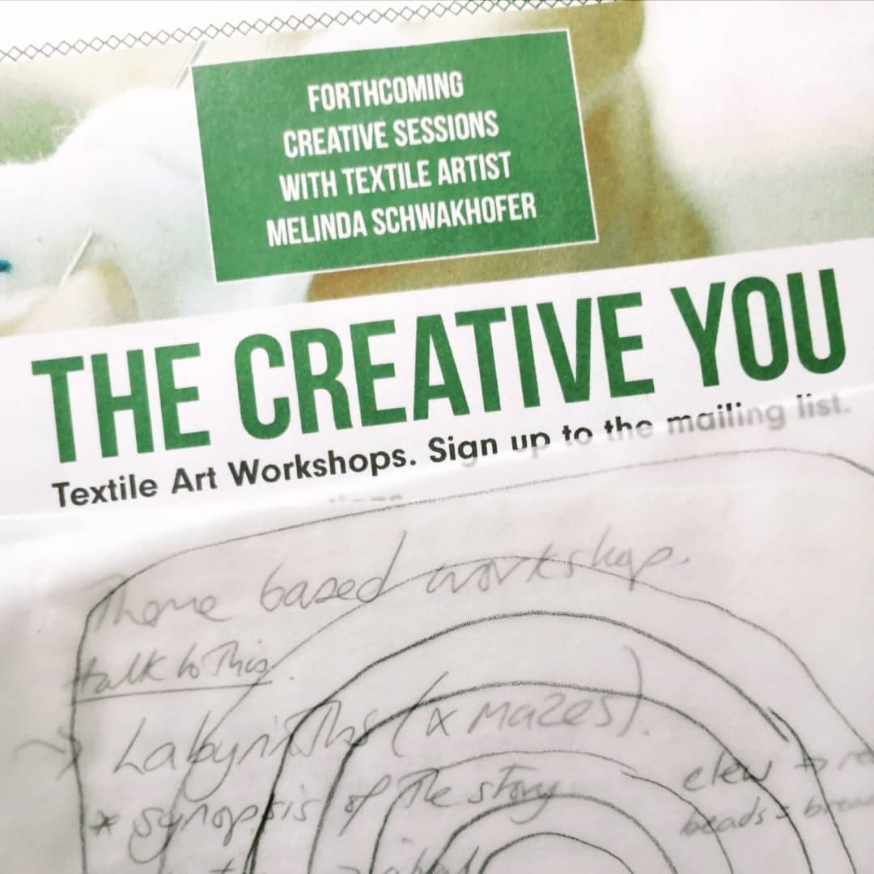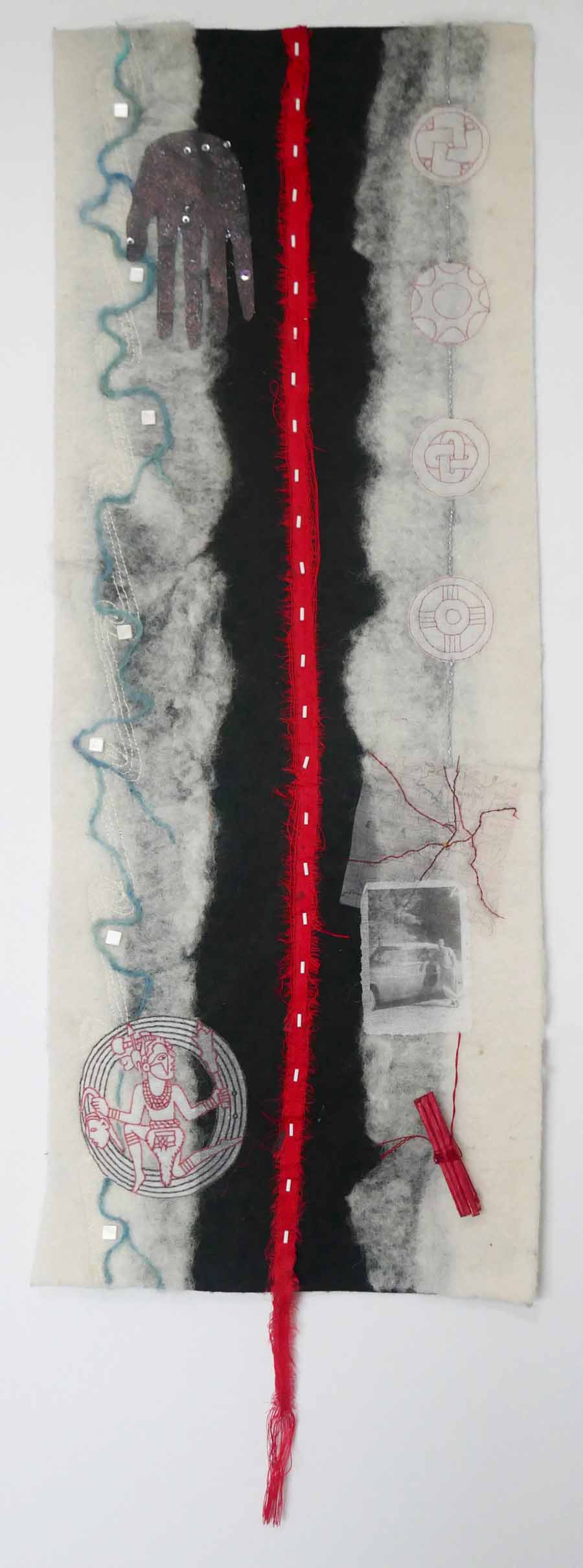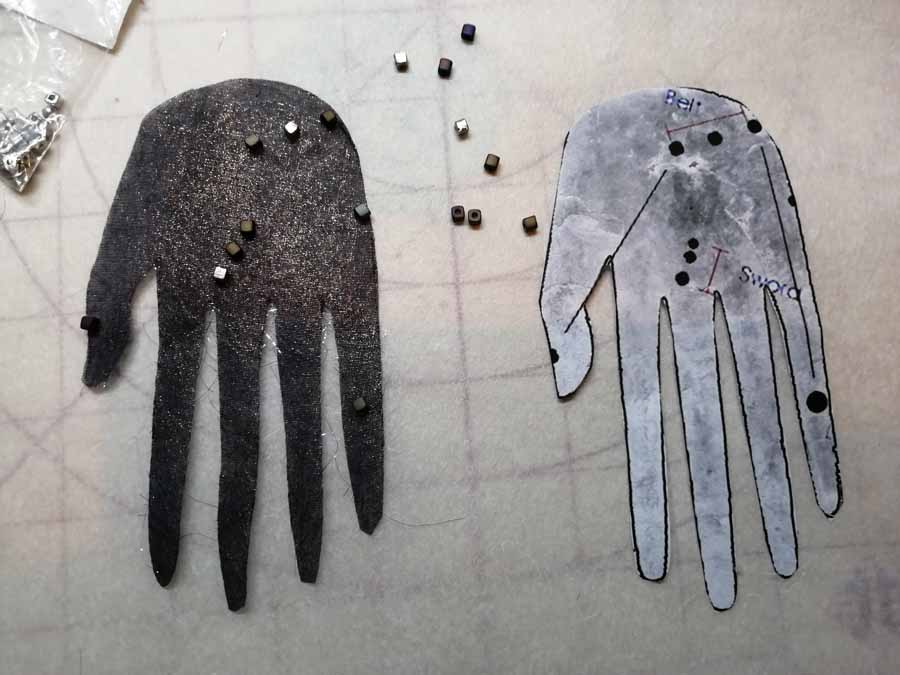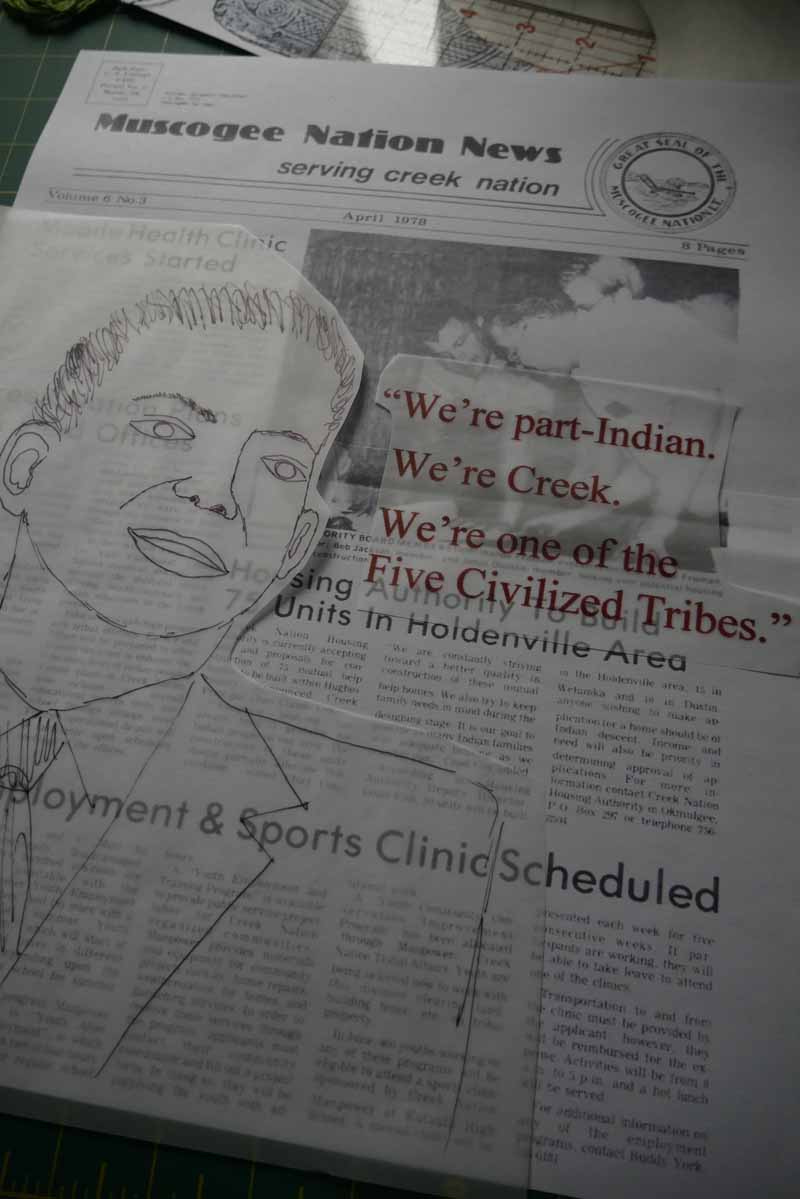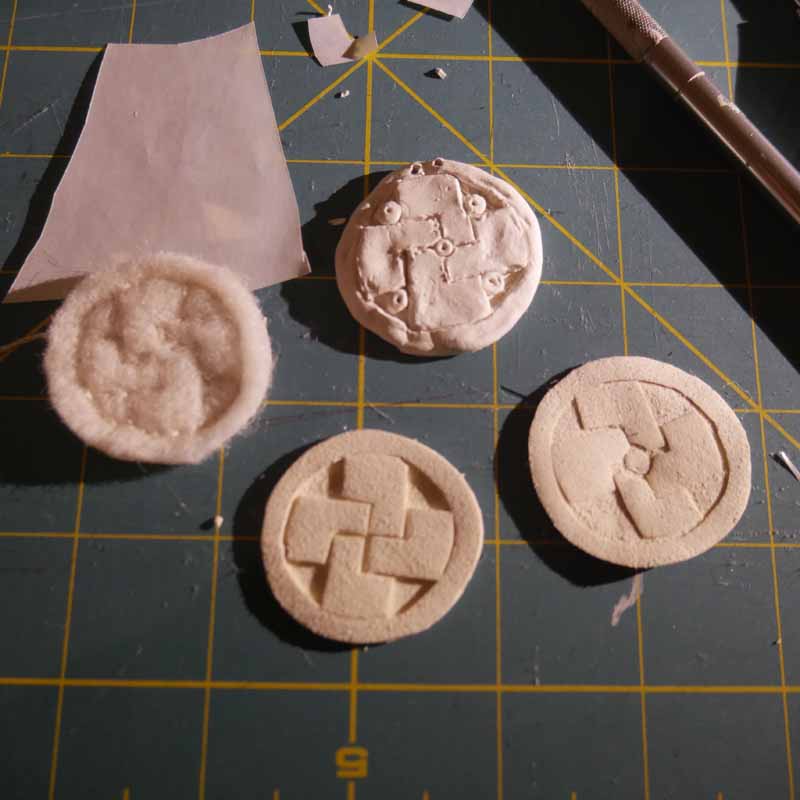Well now, I thought I’d written about this next piece two years ago when I started making it.
Working title for a work in progress: The Road to Oklahoma
It is about being torn apart, partings from, partings through, bloodline, arrival, departure, the long straight road that cuts through the land.

September 2015
The base is made from undyed fleece from a Whiteface Dartmoor sheep needle felted onto black acrylic felt. Torn red silk dupioni stitched down with white bugle beads bisects the road. I machine stitched a sinuous Mississippian riverine motif along the left hand side.

The back side tells a story too.
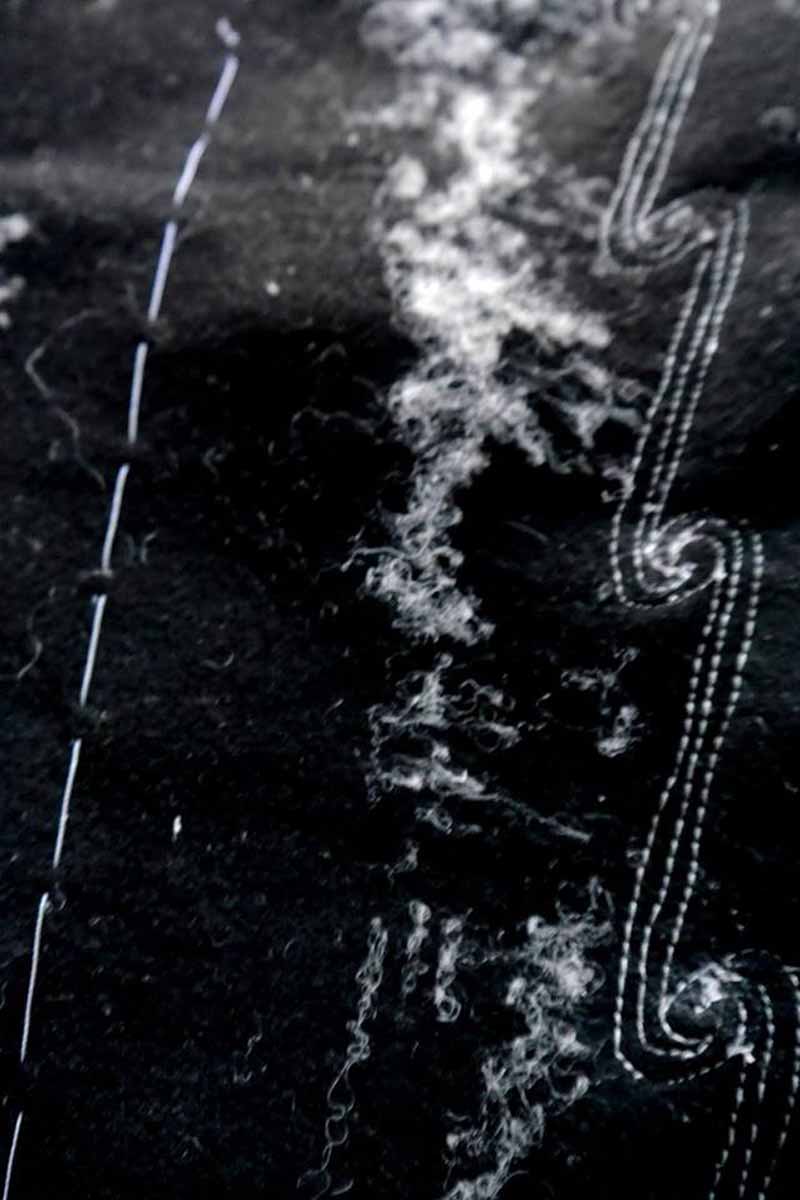
It has been hanging on my design wall since 2015. A couple of weeks ago, I have come back to work on it.
I made some gorgets from paper clay. The original ones would have been carved from whelk shells by the Mississippian ancestors of the Mvskoke.

I stitched them to the top right hand side of the piece with red thread,

but then decided to change to cream thread. The metal disc is the cremation remains disc from my father’s ashes.

On the lower left side is another Mississippian gorget, printed onto organza of a Red Stick warrior. This represents and honours my Mvskoke ancestors who lived in what is now the state of Alabama until we were ‘removed’ to Indian Territory in the 1830’s. We were called Upper Creeks by the European invaders to differentiate us from the Lower Creeks who had settled in what is now Georgia.

This is also about my dad Frank Charles Schwakhofer, who was born in Muscogee, Oklahoma in 1919. Because he was half Muscogee (Creek) and half white, he never felt like he fit in anywhere. Both the white and the Indian kids called him a ‘half breed’. He never learned to speak Creek, but he could understand it. He left home as soon as he could. First, riding the freight trains out to California in the mid 1930’s when he was 16. Then when he got older, he always had a car. He drove off and never looked back.
I printed a map with the city of Muscogee in the middle onto cotton organza. This map is from 1905, when it was still Indian Territory, soon to become the state of Oklahoma. I hand embroidered the roads in red thread and sewed a gold bead right smack on top of Muscogee. The photo of my dad, also printed onto organza, is from June 1955. On the road somewhere.

an Indian and his car

